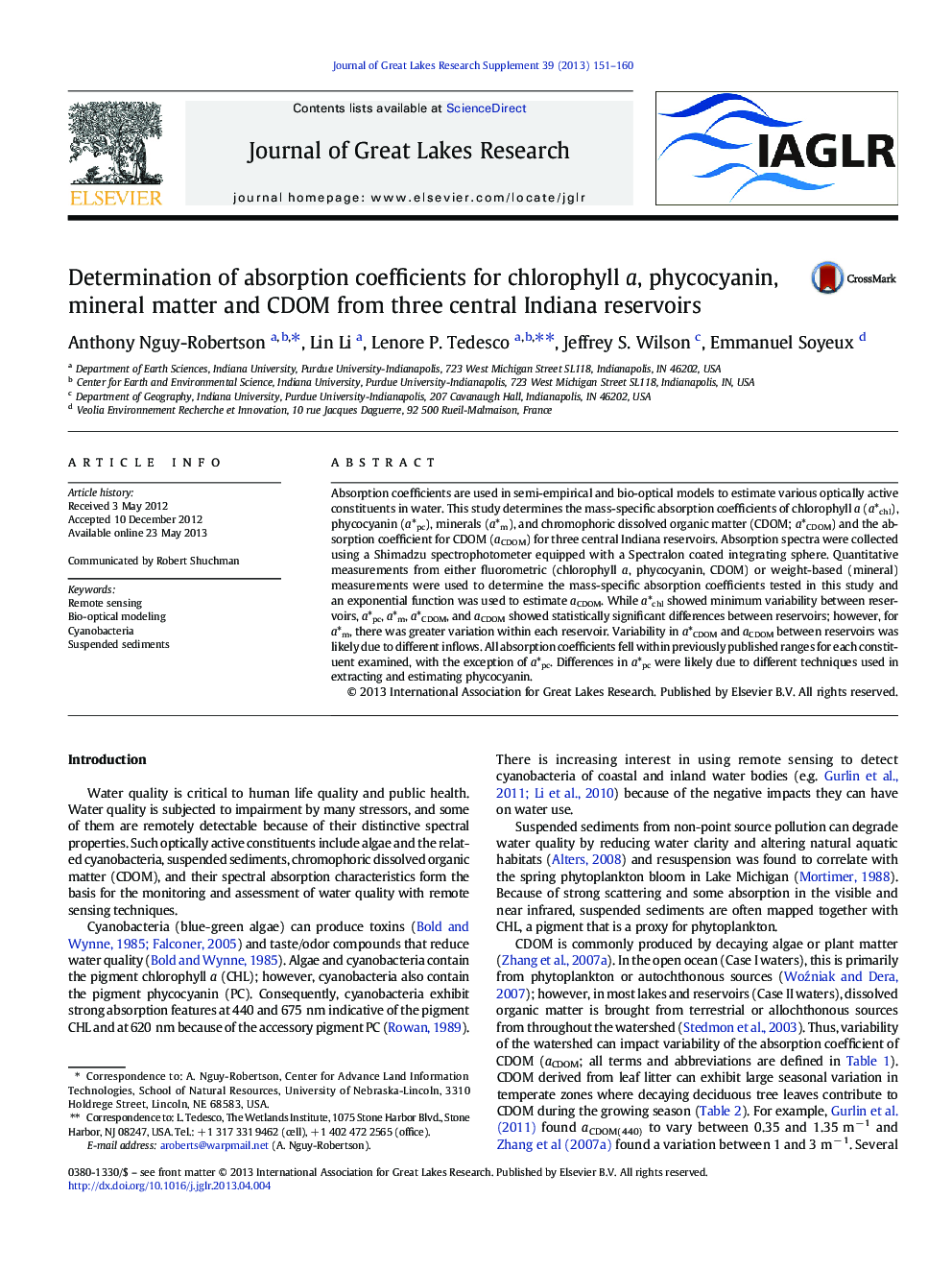| Article ID | Journal | Published Year | Pages | File Type |
|---|---|---|---|---|
| 4398751 | Journal of Great Lakes Research | 2013 | 10 Pages |
Abstract
Absorption coefficients are used in semi-empirical and bio-optical models to estimate various optically active constituents in water. This study determines the mass-specific absorption coefficients of chlorophyll a (a*chl), phycocyanin (a*pc), minerals (a*m), and chromophoric dissolved organic matter (CDOM; a*CDOM) and the absorption coefficient for CDOM (aCDOM) for three central Indiana reservoirs. Absorption spectra were collected using a Shimadzu spectrophotometer equipped with a Spectralon coated integrating sphere. Quantitative measurements from either fluorometric (chlorophyll a, phycocyanin, CDOM) or weight-based (mineral) measurements were used to determine the mass-specific absorption coefficients tested in this study and an exponential function was used to estimate aCDOM. While a*chl showed minimum variability between reservoirs, a*pc, a*m, a*CDOM, and aCDOM showed statistically significant differences between reservoirs; however, for a*m, there was greater variation within each reservoir. Variability in a*CDOM and aCDOM between reservoirs was likely due to different inflows. All absorption coefficients fell within previously published ranges for each constituent examined, with the exception of a*pc. Differences in a*pc were likely due to different techniques used in extracting and estimating phycocyanin.
Related Topics
Physical Sciences and Engineering
Earth and Planetary Sciences
Earth and Planetary Sciences (General)
Authors
Anthony Nguy-Robertson, Lin Li, Lenore P. Tedesco, Jeffrey S. Wilson, Emmanuel Soyeux,
